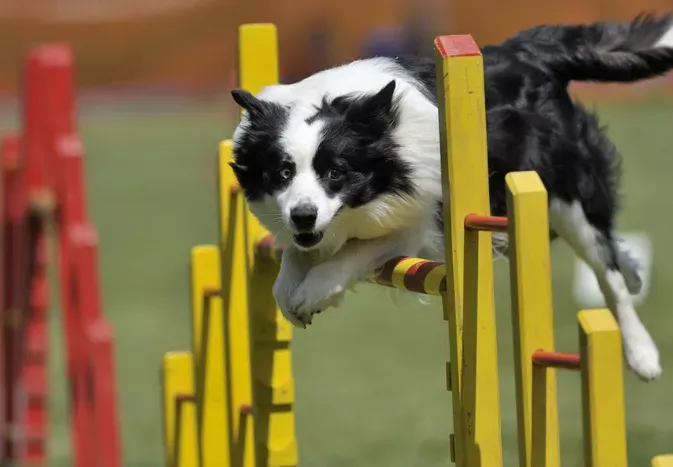Why Almost Any Dog Can Do Agility Training
Updated on 05/27/24

Unlock the Agility Potential: Why Almost Any Dog Can Master the Obstacle Course
Agility training has long been reserved for elite handlers and their exceptional canines. However, this exhilarating sport is not just for the chosen few. With the right approach, almost any dog can embark on an agility adventure and reap its countless benefits.
The Myth of Predestined Agility Dogs
The misconception that only certain breeds or preternaturally athletic dogs are suited for agility stems from the sport's competitive dimension. While it's true that some breeds have a natural advantage due to their agility, size, and speed, the vast majority of dogs possess the physical and mental capabilities to navigate an agility course with ease.
Debunking the Age, Size, and Health Barriers
Age is no barrier to agility. Puppies as young as six months can start their training in a safe and controlled environment, developing their coordination and confidence. Senior dogs can also benefit from agility, as it provides mental stimulation, improves mobility, and reduces boredom.
Size is equally irrelevant. Small dogs can compensate for their lack of height with agility and speed, while large dogs bring strength and power to the course. Plus, there are numerous agility classes specifically tailored to different size categories, ensuring that every dog can compete on a level playing field.
Even dogs with mild health conditions can participate in agility with some modifications. For example, dogs with hip dysplasia may require ramps instead of jumps, while dogs with breathing problems can benefit from additional rest periods.
The Key to Success: Training Tailored to Your Dog
The key to unlocking the agility potential of any dog lies in understanding its individual strengths and weaknesses. Training should be tailored to the dog's physical abilities, temperament, and learning style.
Positive Reinforcement and Gentle Guidance
Positive reinforcement is essential for agility training. Rewards such as treats, praise, or a favorite toy motivate dogs to learn and cooperate. Gentle guidance using a leash or food lure can help dogs understand what's expected of them.
Gradual Progression and Patience
Agility training should be a gradual process. Start with basic obstacles and commands and gradually increase the complexity as your dog gains confidence and proficiency. Patience is crucial, especially with dogs that are new to the sport or have any behavioral challenges.
Benefits Beyond the Course
Agility training not only strengthens the bond between you and your dog but also provides numerous benefits:
* Improved Physical Fitness: Agility requires dogs to use their entire bodies, promoting balance, coordination, and cardiovascular health.
* Mental Stimulation: Navigating an agility course engages dogs' minds, improving focus, problem-solving skills, and cognitive function.
* Increased Confidence: Overcoming obstacles builds dogs' confidence in themselves and their abilities.
* Reduced Behavioral Problems: Agility training provides an outlet for dogs' energy and allows them to practice obedience commands, reducing boredom and destructive behaviors.
Examples of Unlikely Agility Champions
* Lulu the Pug: Lulu is a pint-sized pug who has become a star on the agility circuit. Her speed and agility make up for her diminutive size.
* Diesel the Great Dane: Diesel is a massive Great Dane who defies the stereotype that large dogs can't be agile. His strength and determination make him a formidable competitor.
* Lucy the Rescue Dog: Lucy is a rescued dog with a history of trauma. Agility training has helped her overcome her fears and build her confidence.
Conclusion
Agility training is not just for elite athletes or competition-obsessed handlers. With the right approach and tailored training, almost any dog can enjoy the physical, mental, and emotional benefits of agility. Embrace the challenge and witness the incredible transformation your dog undergoes as it conquers the obstacle course with joy and enthusiasm.
Explore More Pets

Basic Training
Puppy and Baby Introductions

Working Dog Breeds
All About Search and Rescue Dogs

Dog Treatments
Puppy Vaginitis: Signs, Causes and Treatment

Dog Adoption
After More Than 1,200 Days in the Shelter, Coco Goes Home

Basic Training
How to Train Your Puppy to Go on Potty Pads

Hybrid Dog Breeds
The Difference Between a Mutt, Mixed Breed, or Designer Dog?

Dog Treatments
Nail Problems in Dogs

Puppies
7 Reasons Why Two Dogs Are Better Than One
